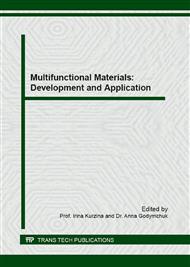[1]
S.H.A. Boers, P.J.G. Schreurs, M.G.D. Geers, V. Levkovitch, J. Wang, B. Svendsen, Experimental characterization and model identification of directional hardening effects in metals for complex strain path changes, Int. J. Solids and Str. 47 (2010).
DOI: 10.1016/j.ijsolstr.2010.01.022
Google Scholar
[2]
V. Maiera, K. Durst, J. Mueller, B. Backes, H.W. Höppel, M. Göken, Nanoindentation strain-rate jump tests for determining the local strain-rate sensitivity in nanocrystalline Ni and ultrafine-grained Al, J. Mater. Res. 26 (2011) 1421-1430.
DOI: 10.1557/jmr.2011.156
Google Scholar
[3]
M.A. Soare, W.A. Curtin, Single-mechanism rate theory for dynamic strain aging in fcc metals, Acta Materialia 56 (15) (2008) 4091-4101.
DOI: 10.1016/j.actamat.2008.04.030
Google Scholar
[4]
G.C. Kaschner, J.C. Gibeling, A Study of fatigue (cyclic deformation) behavior in FCC metals using strain rate change tests, Key Eng. Mater. 378-379 (2008) 371-384.
DOI: 10.4028/www.scientific.net/kem.378-379.371
Google Scholar
[5]
S.N. Kolupaeva, T.A. Kovalevskaya, O.I. Daineko, M.E. Semenov, N.A. Kulaeva, Modeling of temperature and rate dependence of the flow stress and evolution of a deformation defect medium in dispersion-hardened materials, Bulletin of the Rus. Academy of Sci: Phys. 74 (2010).
DOI: 10.3103/s1062873810110080
Google Scholar
[6]
M. Semenov, S. Kolupaeva, T. Kovalevskaya, O. Daneyko, Mathematical modeling for the processes of strain hardening in heterophase materials with nanoparticles, J. of World Academy of Science, Eng. and Technol. 55 (2011) 496-501.
DOI: 10.1134/s0036029511100089
Google Scholar
[7]
M.C. Casperson, J.D. Carroll, J. Lambros, H. Sehitoglu, R.H. Dodds Jr., Investigation of thermal effects on fatigue crack closure using multiscale digital image correlation experiments, Int. J. of Fatigue 61 (2014) 10-20.
DOI: 10.1016/j.ijfatigue.2013.11.020
Google Scholar


